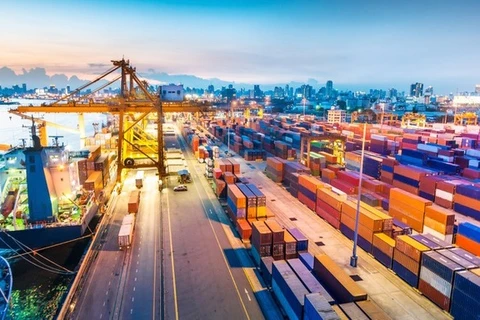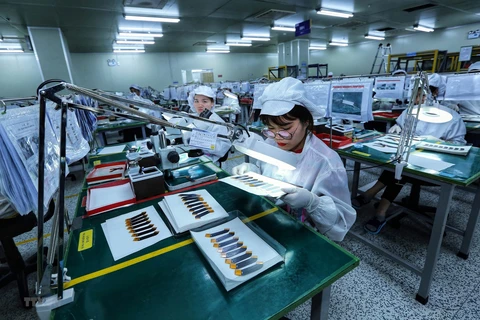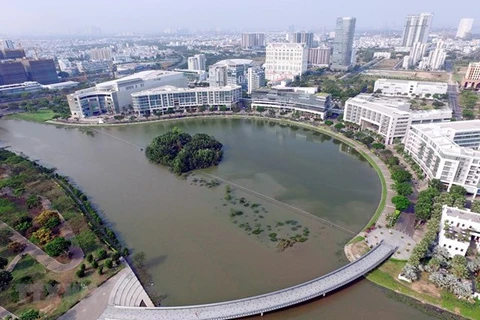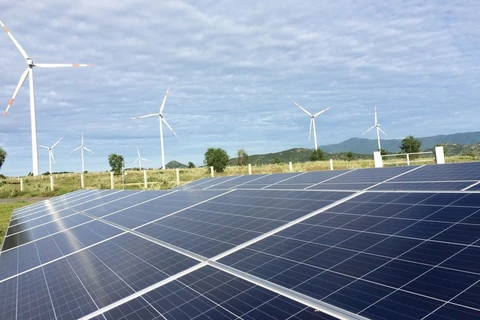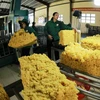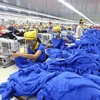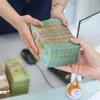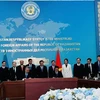Hanoi (VNA) – Vietnam has recorded an economic growth rate of 8% in 2022 - the highest over the last 25 years, according to a report released by lender HSBC recently.
However, experts from the lender caution that Vietnam should not rest on its laurels as several favourable factors are gradually diminishing.
In its report "Vietnam at a Glance", HSBC stated that Vietnam is the first country in Asia to announce its 2022 data, showcasing impressive figures for a challenging year.
HSBC experts also noted that Vietnam cannot rest on its laurels, as trade headwinds are on the horizon and will impact the economy.
 HSBC believes that there are still reasons to be optimistic as Vietnam's tourism industry presents an opportunity for continuous recovery. (Photo: VietnamPlus)
HSBC believes that there are still reasons to be optimistic as Vietnam's tourism industry presents an opportunity for continuous recovery. (Photo: VietnamPlus)
Vietnam posts highest growth in 25 years.
Vietnam’s economic growth expanded by 5.9% in the fourth quarter of 2022 compared to the same period last year. This is slightly lower than HSBC's expectation of 6.2% but higher than the market forecast of 4.6%. This result brought the full-year growth to 8.0%, nearly equivalent to HSBC's 8.1-percent forecast, marking Vietnam's record growth rate since 1997.
Vietnam is likely to once again join the group of outstanding growth countries in Asia, potentially ranking second only to Malaysia.
In a regional context, Vietnam continues to be one of the ASEAN member nations that benefits greatly from foreign direct investment (FDI).
 Vietnam continues to be one of the ASEAN member nations that benefits greatly from foreign direct investment (FDI). (Photo: CEIC, HSBC)
Vietnam continues to be one of the ASEAN member nations that benefits greatly from foreign direct investment (FDI). (Photo: CEIC, HSBC) Vietnam’s production prospects are starting to face challenges, as the latest Vietnam Manufacturing Purchasing Managers' Index (PMI) fell further to 46.4 in December, the lowest level in the past 1.5 years, stated the HSBC report.
Furthermore, Vietnam's overall trade surplus advantage was once again narrowing due to a slowdown in exports and a significant increase in energy imports in the first half of 2022. This has resulted in a low trade surplus of only 4.1 billion USD (1% of GDP) in the year. With a low trade surplus, it is likely that it will not be able to offset the deficits in primary income and services, HSBC said.
Therefore, Vietnam is likely to experience a slight current account deficit for the second consecutive year, estimated to be around 1.4% of GDP, which will impact the recovery of the local currency. In reality, the VND has faced significant depreciation pressure against the strong USD, weakening the current account and diminishing the arbitrage advantage.
To protect the domestic currency, authorities have been selling off foreign currency reserves, which have seen a significant decline of 20% as of the third quarter of 2022 compared to its peak at the end of 2021. The recent adjustment of the USD exchange rate, along with improved USD liquidity, has helped alleviate some pressure on the VND.
According to HSBC, Vietnam continues to face strong inflationary pressures. December 2022 marks the third consecutive month of inflation surpassing the 4% threshold set by the State Bank of Vietnam (SBV).
Not only has the core inflation increased by 5% compared to the same period last year, but Vietnam has also witnessed a rise in raw material prices. This implies that the central bank is likely to continue its tightening cycle.
On the monetary front, as the last ASEAN central bank to take action, the SBV has been actively “playing catch up” in the face of a weakening VND and rising inflation. The bank has delivered back-to-back rate hikes by 200 basis points in 2022.
However, rising core inflation increasingly suggests SBV’s hiking cycle is still underway. HSBC’s experts anticipate that the central bank will raise the refinancing rate by 0.5 basis points in the first and second quarters of 2023, taking the refinancing rate to 7.0% by mid-2023.
HSBC believes that there are still reasons to be optimistic as Vietnam's tourism industry presents an opportunity for continuous recovery.
China’s reopening from January 8 is likely to provide a necessary boost, it added.
Furthermore, Vietnam continues to be an attractive destination for FDI, partially offsetting the current trade difficulties, the bank said.
Vietnam's GDP is projected to grow at a moderate rate of 5.8% in 2023, while the average inflation will increase to 4% in the year./.



